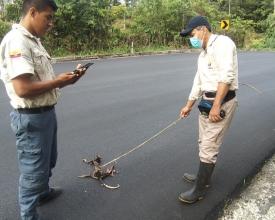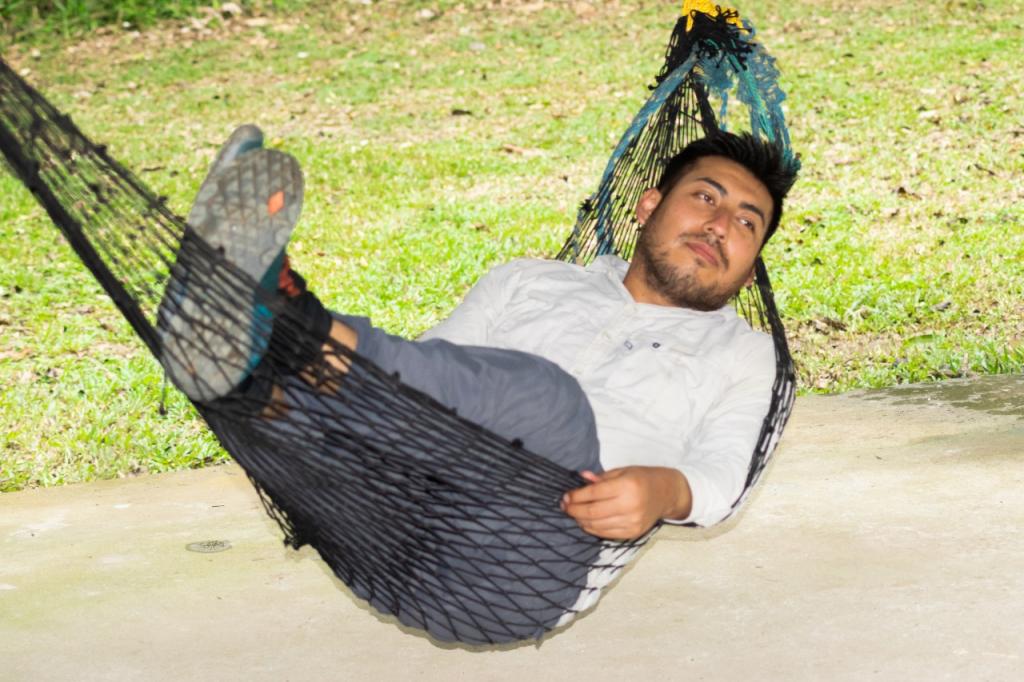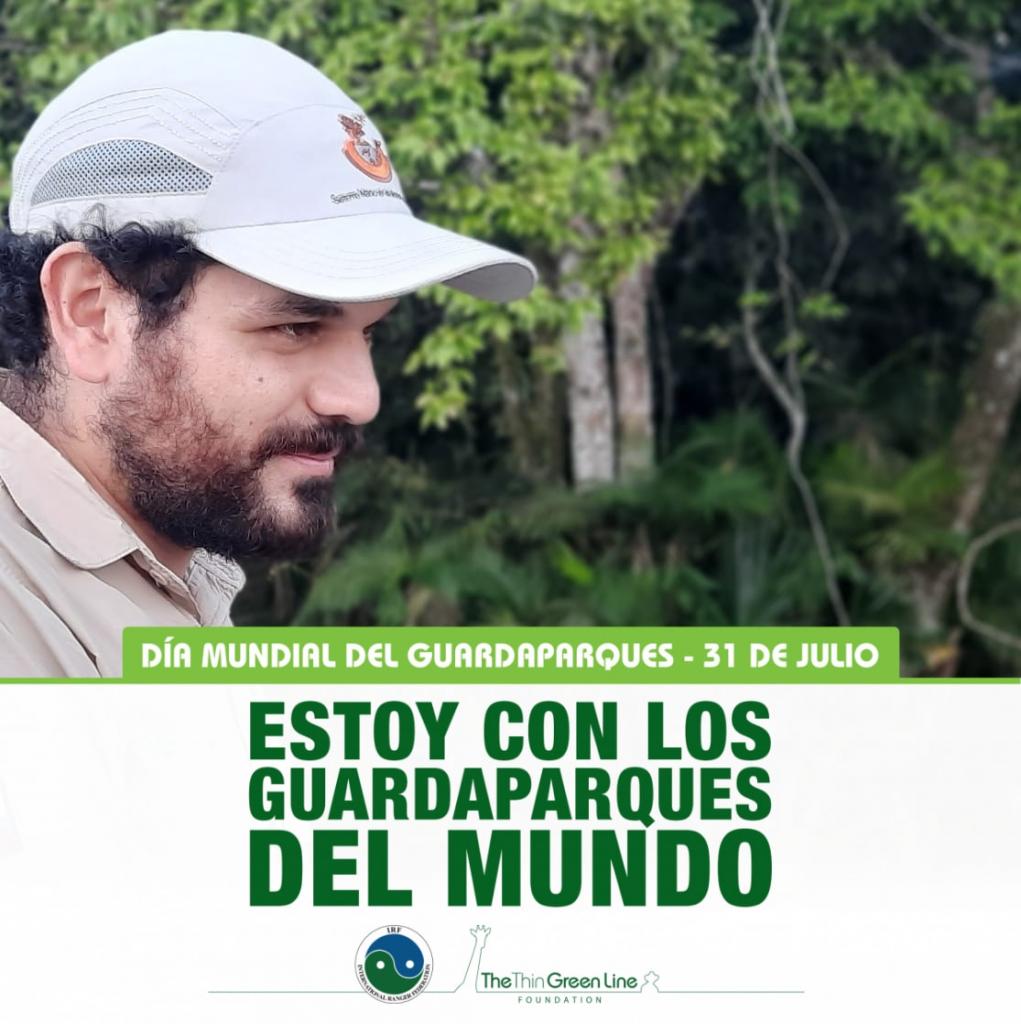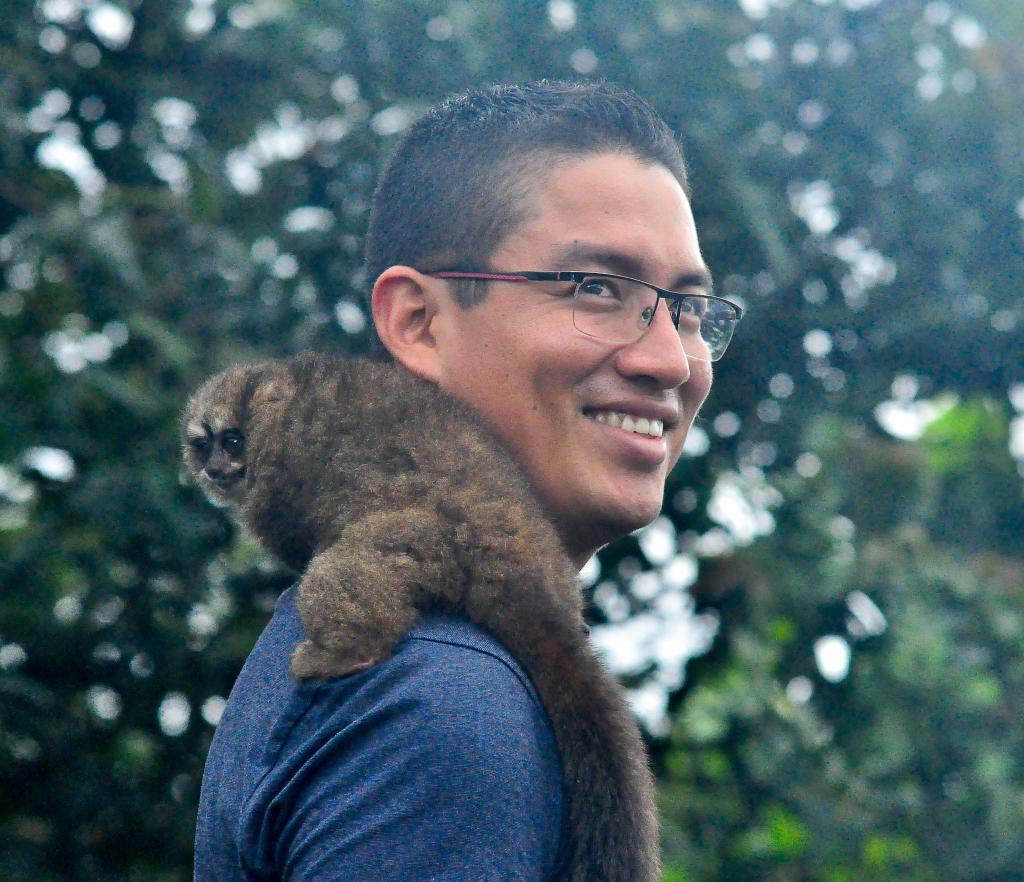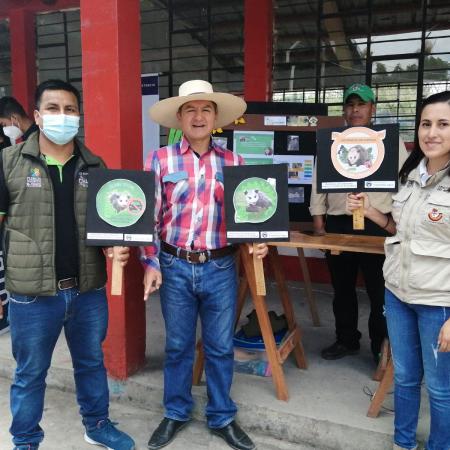
Wildlife Hit-and-Run. Proposal for an Action Plan in Cayambe Coca National Park.
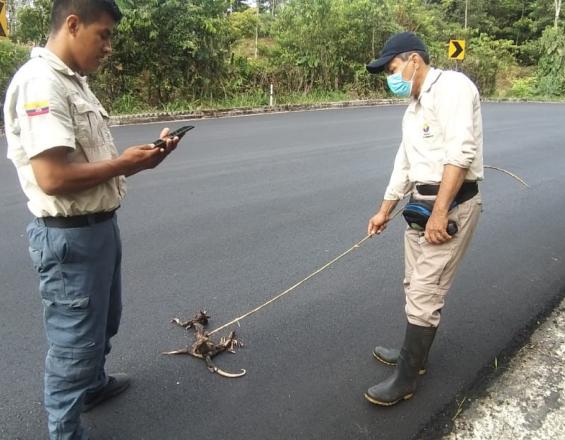
During 2020, the Cayambe Coca National Park team began collecting information on wildlife run over on the E20, E45 and E10 roads, using the Epicollect application. Preliminary results show that Didelphis marsupialis and Didelphis pernigra are the species most frequently run over. In addition, there have also been reports of reptiles, birds and other mammals being run over.
Based on the data obtained, approaches have been made to the Ministry of Transportation and Public Works to install depressed wildlife crossings and canopy bridges, as well as signage in places defined as hot spots or areas of high conflict.
As part of the Environmental Education Program, talks have been held with transport cooperatives in the cantons of El Chaco and Gonzalo Pizarro to raise awareness of the problem. A group of young people has also been organized to learn about the problem and help gather information through the application.
Context
Challenges addressed
The main challenge for the implementation of preventive measures to minimize wildlife deaths on roads is the scarce budget, lack of technical personnel and lack of interest in the Ministry of Transportation and Public Works in this problem.
Unfortunately, as a country we do not have much experience in terms of road ecology and the installation of infrastructure to connect two sections of forest separated or divided by a road. In Ecuador there are few initiatives on the subject, and if they exist they have not been published.
It is necessary to articulate actions between the Ministry of Environment, Water and Ecological Transition and the Ministry of Public Works so that the solution to this recurrent problem on roads throughout the country is considered a state policy. It is also important to allocate resources for data collection and the execution of massive campaigns through social networks to make these deaths visible.
Location
Process
Summary of the process
The main pillar of this study is the biological monitoring that is carried out twice a month on roads E20, E45 and E10, to establish the number of wildlife deaths by roadkill and the location of critical points where there is a higher incidence. This is an activity that should be carried out more frequently and with the support of civil society to obtain better results.
With the data collected from the monitoring, environmental education strategies aimed at drivers and the younger public have been developed to prevent these deaths. It is difficult to work with the adult public; that is why we have included young people who are more open to change their behavior and conduct, knowing that in a few years they will also be on the roads as responsible drivers, respectful of the ecosystem that surrounds them.
The construction of infrastructure and signage for a complete conservation strategy should be coordinated with the Ministry of Transportation and Public Works, and the National Transit Agency.
Building Blocks
Biological monitoring.
Biological monitoring of species that may be threatened by roadkill events allows for the establishment of a program to reduce impacts by providing first-hand information.
Enabling factors
- Implementation of online applications accessible to park ranger personnel to collect information on roadkill events.
- Characterization of the behavior of the species and places with the highest rate of wildlife roadkill, in order to spatialize the phenomenon and establish response strategies.
Lesson learned
- Experiences in other localities and regions should be investigated and sought in order to define the relevance of adopting methodologies or tools that can be adapted to local realities.
- The participation of more local stakeholders should be sought to improve the monitoring system.
- Carry out constant feedback processes to improve the quality of data collection, such as taking photographs to achieve a better framing and capture of important characteristics for scientific identification, as well as the collection of event coordinates, which are the basic data.
Environmental Communication, Education and Participation
Disseminating information about monitoring experiences within protected areas to the population helps to reduce the loss of native species and involve more people in the application of prevention measures.
Enabling factors
- Processing of the information collected and preparation of pedagogically adapted informative material to improve understanding of the problem of wildlife roadkill.
- Ongoing updating of information to involve young students and drivers in the search for practical solutions.
Lesson learned
- It is important to involve the communities in the project, since there is currently a trend towards the use of citizen science, which is nothing more than the generation of new knowledge with the active and essential participation of citizens in at least one stage of the research process,
- Environmental education is not only about communicating or informing, it seeks in essence a participatory response, and in this specific case, it would be the collection of information, which will help to strengthen the databases that are managed, obtaining results that are closer to reality.
Resources
Signage and infrastructure for roadkill prevention
The placement of signage and preventive infrastructure on the roads with the highest rates of traffic accidents is an attempt to provide long-term solutions to the problem.
Enabling factors
- Review of specialized bibliography and exchange with other experiences for the establishment of prevention measures in accordance with the local reality.
- Coordination with the institutions responsible for roads and land transportation in the country to become involved in the implementation of medium and long-term solutions.
Lesson learned
- The work should be coordinated between the Ministry of Environment, Water and Ecological Transition and the National Transit Agency to collect and manage field information.
- As more people become involved and understand the value of wild species and the impact they have on the functioning of ecosystems, more "social" pressure can be exerted to influence decision-makers.
Impacts
The environmental education campaign seeks to raise awareness about the importance of wildlife and its role in ecosystems. An average of 500 people have been reached with this topic in the provinces of Napo and Sucumbíos, working with professional drivers and students between the ages of six and 17.
Special emphasis has been placed on the conservation of foxes or opossums (Dipelphis), as they are the animals that suffer the most roadkill (approximately 46%) on the roads studied. The perception of drivers and citizens in general is that they are "bad", because they eat chickens and their eggs. During the talks, it is argued that they are species that regulate pests such as mice and small reptiles, to counteract this negative idea held by the population.
Five hot spots have been identified, where signage and wildlife crossings should be installed. These measures will reduce the death of wildlife species attempting to cross the roads.
It is important that these physical measures are monitored from the moment they are installed to measure their effectiveness, strengthening the biodiversity monitoring program for compliance with the corresponding indicators of the Green List Standard.
Beneficiaries
Wildlife species will be less likely to be run over, either because of the installation of signage, construction of wildlife crossings or because people will be trained to understand the role of each species.
Sustainable Development Goals
Story

"I have been working for seven years in Cayambe Coca National Park in the lowlands. During the control and surveillance tours that are normally carried out in the provinces of Napo and Sucumbíos (E20 and E45), I regularly saw roadkill animals. Not knowing what to do about it, in 2019, thanks to social networks and a little research I read about a project in Uruguay called ECOrutas, which collects information at the country level of run over wildlife, through the application Epicollet 5. I immediately took contact through a mail that was on the website and, to my surprise they responded, recommending to use the Application as there are several countries that do the same, and that has many advantages to be free to use and you can create the form to collect information according to the objectives of the investigation.
After that, there was a process of self-education on how the application works, management and creation of the form for the project of the Protected Area. Then, the use of the application to collect information was socialized with the park rangers, with certain limitations since the colleagues used their own devices, which was sometimes complicated due to the inclement conditions of the Ecuadorian Amazon. Currently, four tablets have been acquired for use by the project; however, more equipment is needed.
During the pandemic, we began the work of collecting information, having few records, and we believe that due to other factors, such as the impact of the Quito-Lago Agrio road, Piedra Fina sector, and the COVID pandemic, the data with few wildlife deaths by roadkill could be associated with less vehicular traffic.
Now we are looking for more people to know what we are doing and join this initiative to prevent wildlife being run over, but it is also important to work on other related aspects such as fragmentation and restoration to improve connectivity.
There is still much work to be done, such as the implementation of signage and infrastructure that allows connectivity between two segments of the landscape and we hope that more institutions join, know and act to promote the protection of wildlife. We consider this a challenge that the protected area must continue to work on as part of its commitment to meeting the indicators of the Green List Standard."
Diana Medina
